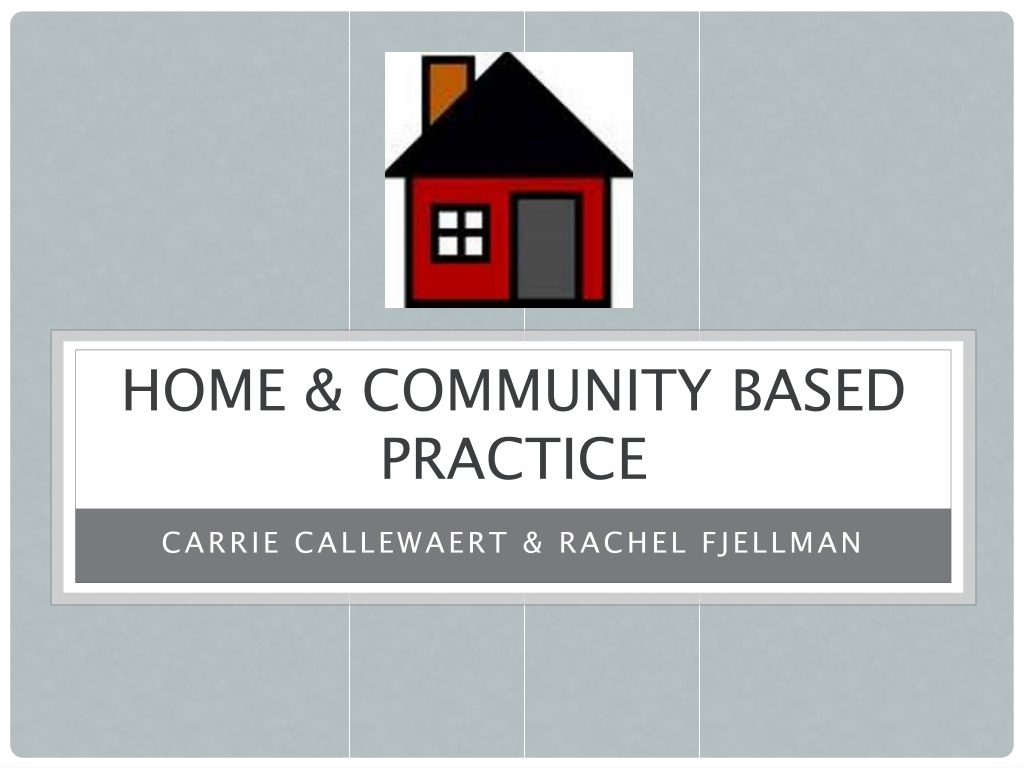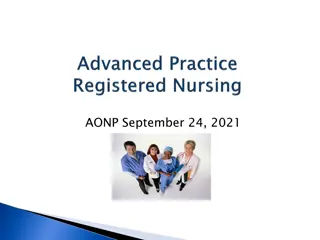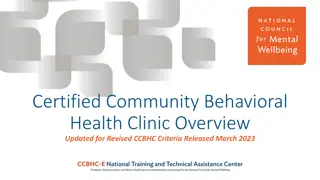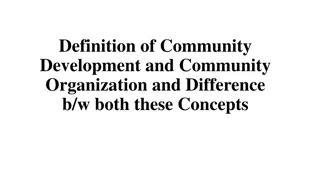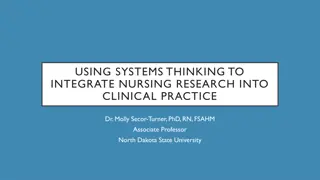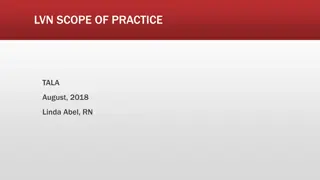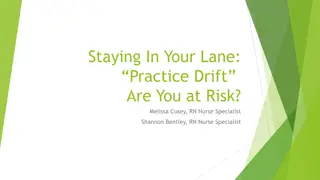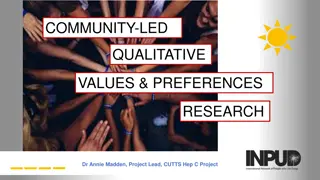Comprehensive Overview of Home and Community-Based Practice
Explore the rich history, evidence-based practices, benefits, types of home visits, and the Salvation Army's use of home and community-based services. Learn how this approach facilitates client-centered care, minimizes barriers, and fosters supportive relationships in natural environments. Discover the evolution of home visiting services, their effectiveness, and the various modes of service delivery across different settings.
- Home-Based Practice
- Community-Based Services
- Evidence-Based Practice
- Home Visits
- Client-Centered Care
Download Presentation

Please find below an Image/Link to download the presentation.
The content on the website is provided AS IS for your information and personal use only. It may not be sold, licensed, or shared on other websites without obtaining consent from the author. Download presentation by click this link. If you encounter any issues during the download, it is possible that the publisher has removed the file from their server.
E N D
Presentation Transcript
HOME & COMMUNITY BASED PRACTICE CARRIE CALLEWAERT & RACHEL FJELLMAN
HOME/COMMUNITY BASED PRACTICE Mode of service delivery based on advantages of providing services to clients in their natural environment. Includes services provided to families in the home, community and office settings. Evidence based practice used throughout social work settings
HISTORY OF HOME VISITING 1890s 1900s Friendly visiting by charitable organizations Emergence of home-visiting teachers and school liaisons, Home-visiting program by Massachusetts General Hospital 1960s 1970s Home visits for social welfare practice Separation of social services from income assistance; First National Clearinghouse for Home-Based Services established 1980s Family Preservation and Support Services Program; Education of the Handicapped Act Amendments; National Resource Center for family based Services established. 1990s Growth in home-based services: home health-care, hospice, early childhood, intervention, youth and family treatment 2000s Promoting Safe and Stable Families Amendment; President s New Freedom Commission on Mental Health
EVIDENCE BASE US Department of Health and Human Services - Home Visiting Evidence of Effectiveness
BENEFITS Access to clients Ensures continuity of care Minimizes barriers to care Minimizes the power imbalance Observe clients in their natural environment Meet the clients where they are
TYPES OF HOME VISITS Process Focused relationships Process Focused engagement oriented, fostering Resource Focused link to community resources Resource Focused assess strengths and needs; Risk Focused family and reduce risk to members Risk Focused foster cooperation within in the
THE SALVATION ARMY USE OF HOME/COMMUNITY BASED PRACTICE oShelter Programs oTransitional Living oPermanent Supportive Housing oHomeless Street Outreach oPathway of Hope oYouth Ministries/Community Center Programming oPastoral Care Visits Community Caring Ministries
SKILLS AND KNOWLEDGE Observation Skills Risk Assessment Safety Planning Interview/assessment skills De-Escalation Techniques Boundaries Confidentiality
REQUIREMENTS FOR STAFF Education Bachelors degree or equivalent training/experience Training Crisis Prevention (CPI), Safe From Harm, Safety Training Demonstrates Professional Development Professional boundaries and relationships with clients Additional skills and knowledge Organizational Structure Support of Corps Officers and Supervisor Appropriate supervision in place Compliance with corresponding policies Education - - Training Demonstrates Professional Development - - Organizational Structure - -
POLICIES, PROCEDURES & GUIDELINES Code of Ethics Confidentiality WUM Division Home and Community Based Practice Policy WUM Behavior Management Transportation Policies Safe From Harm Reporting/Mandated Reporter Guidelines for working with children, youth and vulnerable adults Local Corps or Service Unit Policies/Procedures
HOME/COMMUNITY BASED PRACTICE Home visiting is a mode of service delivery across social work practice settings based on the advantages of providing services to clients in their "natural environments Home visiting requires a specific skill set and comes with some unique challenges.
CHALLENGES Safety Transportation Confidentiality Boundaries Ethical Dilemmas
STATISTICS 48% of non-fatal injuries from assaults and violent acts in a work setting took place in health care and social service settings. Social workers had an incidence rate of 15 per 10,000 full-time workers for injuries resulting from assaults and acts of violence. Results of a national study of 1,029 NASW members, finding that: 62% had been subject to psychological aggression in the past year, with 85.5% experiencing this at some point in their careers 14.7% had experienced physical assault perpetrated by clients in the past year, with 30.2% having experienced this at some point in their career.
WHAT DO THE STATS TELL US? We must always remain aware of safety issues in our daily interactions with clients.
#1 RULE Use Your Judgment!!
OBSERVE Everything! Environment Street lights out, gathering of people, etc. Yourself Non-verbal signals, quick statements, lack of empathy, etc. Client Pacing or over anxious, mumbling, swearing, other signs of confusion/agitation, etc.
BEFORE YOU GO Learn about the area before you go. Make sure you have the proper address. Go with someone, if possible. Make appointments for early in day. Be specific about appointment time.
BEFORE YOU GO Make sure car has gas and is in good working order. Park car in a well-lit area and accessible area. Dress appropriately-no jewelry. Make sure cell phone is working and pre- programmed. Call to alert family you are on the way
BEFORE YOU GO Carry a flash-light. Be observant of building or house. Listen before you enter house or apartment. Put your purse or other belongings in the trunk prior to arriving to the home.
WHEN TO BE CONCERNED Street lights are out or area appears too dark. Can t park close enough to feel comfortable. Gathering of strangers or teens that cause concern. Your instinct tells you it may not be safe. ALWAYS PAY ATTENTION!
IDEAS TO LET OTHERS KNOW WHERE YOU ARE Field Safety Forms Name and address of clients you are visiting Estimated time of arrival and departure The nature of your visit Your cell number Calendar Dry Erase Board Other Ideas??
EXAMPLE Field Form- 10/01/14 Client Initials Client Initials Est. Depart. Est. Depart. Nature of Visit Nature of Visit Staff Staff Address Address Est. Arrival Est. Arrival Cell # Cell # Sarah Sarah 123 Spooky Lane C.L 1:00pm 2:30pm POH 123-4567
WARNING SIGNS & CUES TO POTENTIALLY VIOLENT BEHAVIOR Presence of a mental illness History of substance abuse, weapons possession, criminal record, violent behavior Hard time with authority figures Depression Feeling desperate Fascination with weapons
DURING A VISIT Remain aware. If person or persons you made visit with are not available, LEAVE Too much activity, other people, party LEAVE Unsafe items, weapons, drugs-LEAVE
DURING A VISIT Control where meeting takes place Sit in a straight-backed chair ALWAYS carry car keys in same place where they are readily accessible
IF ESCALATION OCCURS.. Stay calm Speak in a quiet, slow manner. Don t personalize the situation. Encourage client to be seated. If they stand you stand also.
IF ESCALATION OCCURS Listen, reflect their anger for them Acknowledge the anger. Apologize Allow extra space State your desire to help Offer choices Suggest time out or break Leave or call for help
IF ESCALATION OCCURS Don t challenge or demand calm down Don t touch Don t get into staring contest Do not turn your back on the person
DOGS Dogs bite! Getting Bit Hurts! Any dog can bite! Look for signs of a dog before entering the yard Don t surprise a dog .whistle, tap, call out
APPROACH TECHNIQUES Take off Sunglasses Stand Still Let the Dog Approach Stand Sideways Speak Softly Don t Stare at the Dogs Eyes Observe the Dogs Body Language
PROTECTION TECHNIQUES Don t Turn Your Back Use Firm Commands/yell Give the Dog Something other Than Your Hand to bite Don t Run Vulnerable Parts of a Dog ..(nose, throat, chest & ribs)
ASSESS WHEN TRANSPORTING Client s level of agitation (if any) Use of intoxicants (if any) Possibility client has a weapon Condition of the vehicle
TRANSPORTING A CHILD Engage child safety locks Safety Seats
BED BUGS If you visit clients homes you are at risk for bed bugs. You can t get bed bugs by touching someone in an infested location They don t fly or jump onto people Movement of bed bugs is by direct contact with infested materials.
CONSEQUENCES OF PICKING UP BED BUGS You can spread the infestation to other locations or to your central workplace You can spread an infestation to your home Your belongings or equipment can become infested Increased costs to yourself, your employer, and your clients
HOW TO PROTECT YOURSELF Bring in only what you need Avoid putting items close to walls/furniture Avoid putting them on furniture, clothes, or bedding materials Don t touch bedding materials Avoid sitting on furniture or leaning on walls Inspect yourself/belongings If you find a bed bug, kill it Change into work clothes/shoes when arriving at work and removing them before going home Keep clothes in a sealed plastic container/bag Use heat
BOUNDARIES/ETHICAL DILEMMAS
Make a strong effort to maintain professional boundaries during home visits Role confusion
EXAMPLE Your car is in the shop. A family member will pick you up, but your client doesn t live too far away from your home. You ask if the client would mind dropping you off on his/her way home. He/She readily agrees
EXAMPLE OUTCOME The client who was asked for a favor turned into a bit of a fiasco. The client asked if they could stop on the way home and have dinner together. You refused politely, noting you had to get home to your family. But now the client, who later became a stalker, knew where you lived.
BOUNDARIES Clients can display extreme behaviors on their home turf Let dogs bark/snarl at you Threaten you or let someone threaten you Make sexual advances towards you They may display things Weapons Drugs
CONFIDENTIALITY SPECIAL CONSIDERATIONS WHILE MEETING IN PUBLIC
CONFIDENTIALITY Presence of others Not as private as an office May be meeting in a public place Think Creatively- Go for a walk, ride in the car
INTERFERENCE Children wandering into room Family members interfering Uninvited neighbors, friends, strangers Dogs barking, snarling or attaching Radio, TV, Computers, Cell phones
MANDATED REPORTING Different reporting laws for different states. Know your state and law! Contact your Safe From Harm Coordinator for additional information. Michigan & Wisconsin Law requires certain professionals to report their suspicions of child abuse or neglect Michigan The verbal report can be completed by calling 855-444-3911 (done immediately) followed up with a written DHS-3200 within 72 hours of reporting. Wisconsin Made to the county where the child or the child s family resides
